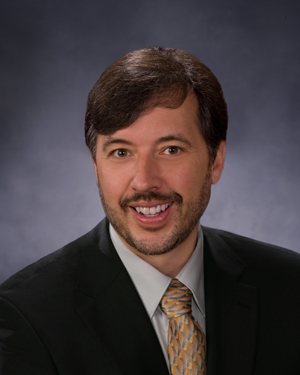How do Colloidal Gels Form and Flow?
Lecture by Norman J. Wagner
Robert L. Pigford Chair of Chemical & Biomolecular Engineering
Director, Center for Neutron Science
University of Delaware
Tuesday, May 5, 2015
Lecture at 4:00 PM
1610 Engineering Hall
Reception at 3:30 p.m. Engineering Hall Lobby
Model thermoreversible nanoparticle gels are studied at equilibrium and under steady and time-dependent shear flow with the goal of experimentally developing a universal state diagram for the adhesive hard sphere potential, testing prevailing theory and simulation, and providing a basis for understanding concentrated protein solutions. A model thermoreversible adhesive hard-sphere system composed of octadecyl-coated silica particles suspended in n-tetradecane is synthesized and fully characterized. Temperature variation enables reversibly transitioning the system from behaving as a near hard-sphere to an adhesive hard-sphere system leading to aggregation and ultimately, a dynamical arrest transition to macroscopic gelation (Langmuir 28, 1866-1878 (2012)). A new state diagram is presented for the adhesive hard sphere model system including dynamical transitions of gel and attractive driven glass formation (PRL 106, 105704 (2011)). Complementary simulations demonstrate that these transitions are the result of rigidity percolation, first proposed by He and Thorpe in 1985, thereby connecting dynamical arrest in the AHS system to the more general phenomenon of dynamical arrest in network forming materials (PRE 88, 060302(R) (2013)). We also resolve whether phase separation is a prerequisite for gel formation and provide quantitative predictions of gel stability in an external field, such as gravity, and identify the limits of stability and the role of spinodal decomposition in gel formation (PRL 110, 208302 (2013)). Novel neutron scattering measurements under dynamic shear flow help determine the mechanism by which gels flow and the effects of flow on gel structure (JOR, 58, 1301 (2014)). A universal behavior is discovered for the shear viscosity and microstructural evolution under steady shear that provides guidance for understanding gel rheology and for processing gels to achieve a desired microstructure. Finally, the recent application of these methods to the study of protein gels and concentrated monoclonal antibody solutions, and related challenges will be discussed (Biophys. J., 106, 1763(2014)).
 |
Norman J. Wagner is the Robert L. Pigford Chaired Professor of Chemical Engineering at the University of Delaware. He served as Chair of the Department from 2007-2012, and also the director of the Center for Neutron Science (www.cns.che.udel.edu). He leads an active research group with focus on the rheology of complex fluids, neutron scattering, colloid and polymer science, applied statistical mechanics, nanotechnology and particle technology. His research areas include the effects of applied flow on the microstructure and material properties of colloidal suspensions, polymers, self-assembled surfactant solutions, and complex fluids in general. Prof. He earned his Bachelors degree from Carnegie Mellon and Doctorate from Princeton University, was an NSF/NATO Postdoctoral Fellow in Germany, and a Director's Postdoctoral Fellow at Los Alamos National Lab prior to joining the University of Delaware in 1991. He was named a Senior Fulbright Scholar (Konstanz, Germany) and served as a guest Professor at the ETH, Zurich (1997) and the University of Rome (2004). His recent awards include election as Fellow of the AAAS (2015), the Bingham Medal of the Society of Rheology (2014), election as fellow of the Neutron Scattering Society of America (2014), and the AIChE PTF Thomas Baron Award (2013). He was awarded the Siple Award in 2002 by the US Army for his development of shear thickening fluids for novel energy absorbing materials (www.ccm.udel.edu/STF/). Prof. Wagner has authored or coauthored over 200 scientific publications and patents, serves on the executive committees of the Society of Rheology and the Neutron Scattering Society of America, as well as on the editorial boards of six international journals. He has co-authored a textbook (2008) on Mass and Heat Transfer for the Chemical Engineering series of Cambridge University Press, as well as Colloidal Suspension Rheology (2011), also Cambridge University Press. Patented and commercially developed scientific instruments include rheo-optic instruments (TA Instruments) as well as novel rheo-SANS instruments for investigating nanoscale and microscale structure in flowing systems currently available at the NIST Center for Neutron Research and the Institute Laue Langevin D22, Grenoble, France. More about Professor Wagner and his research can be found at www.cbe.udel.edu/wagner.
